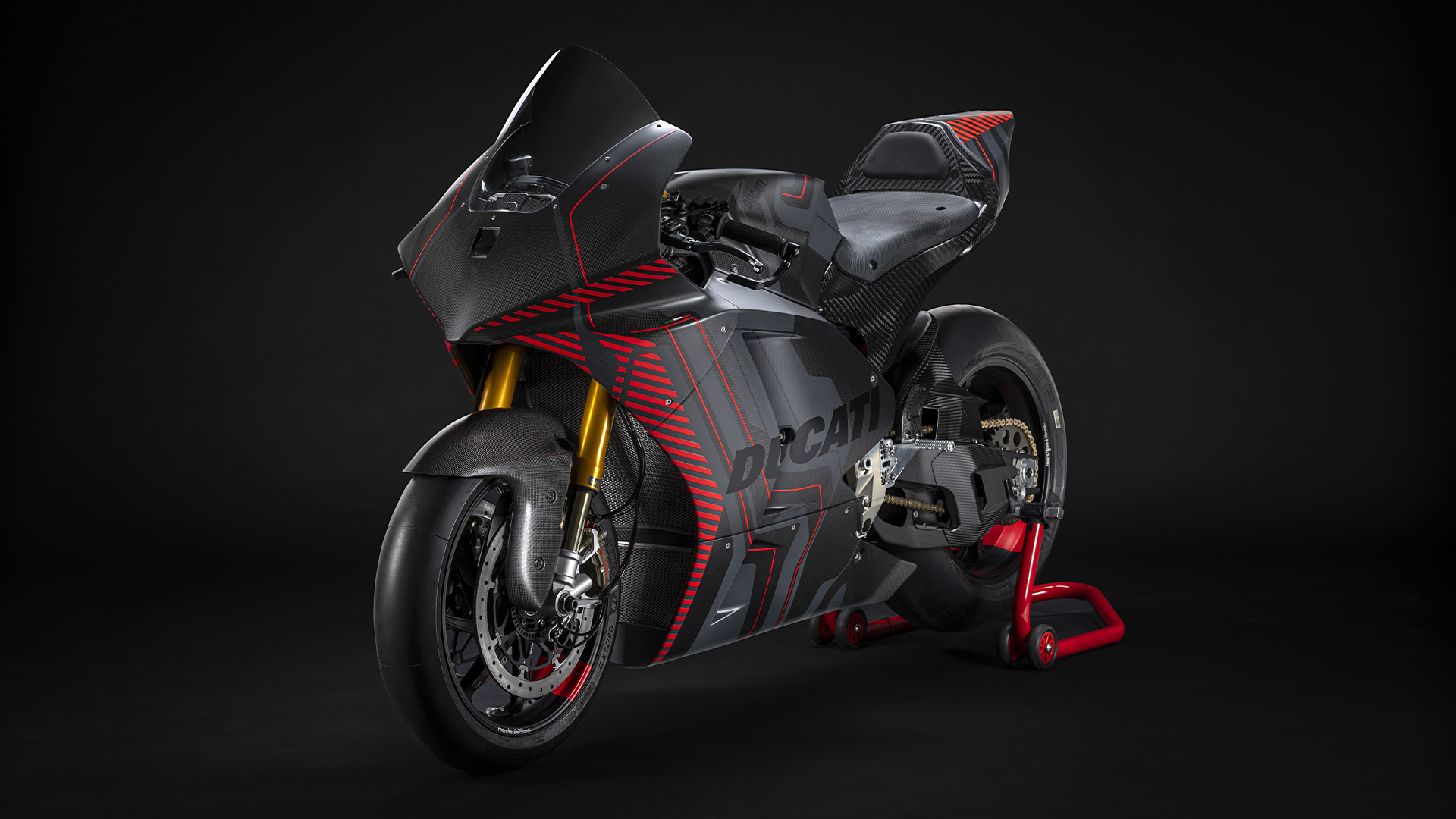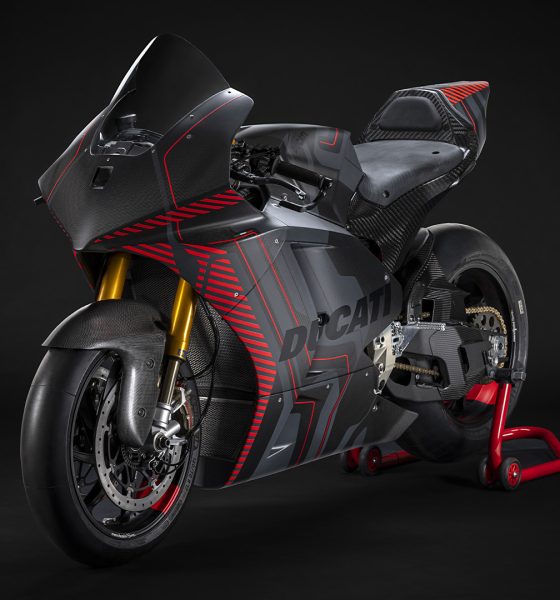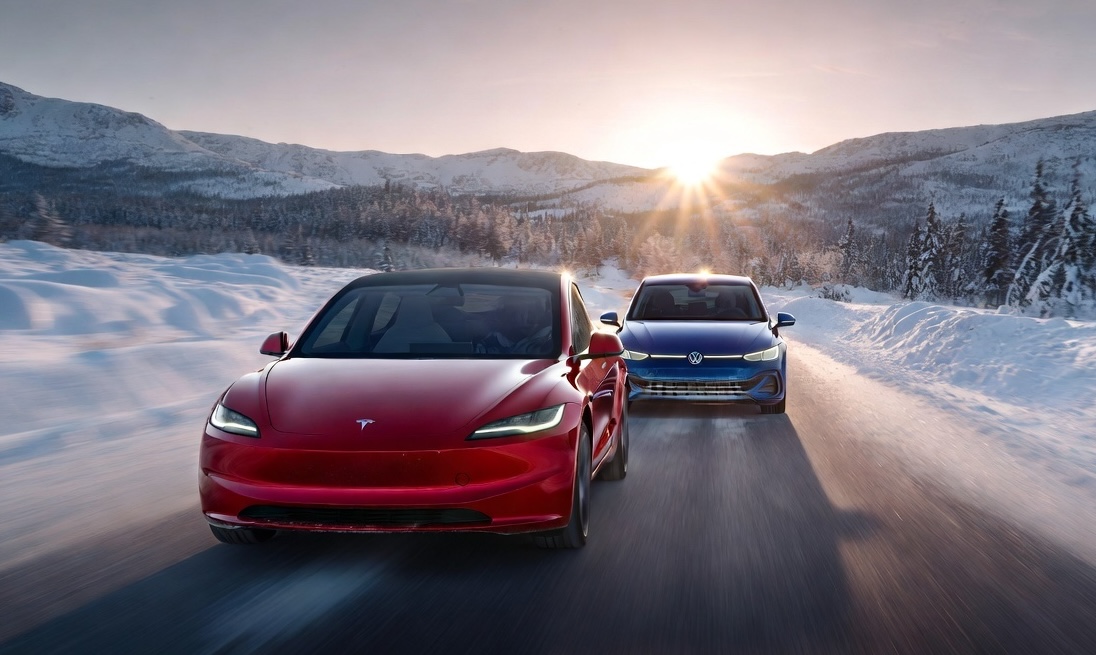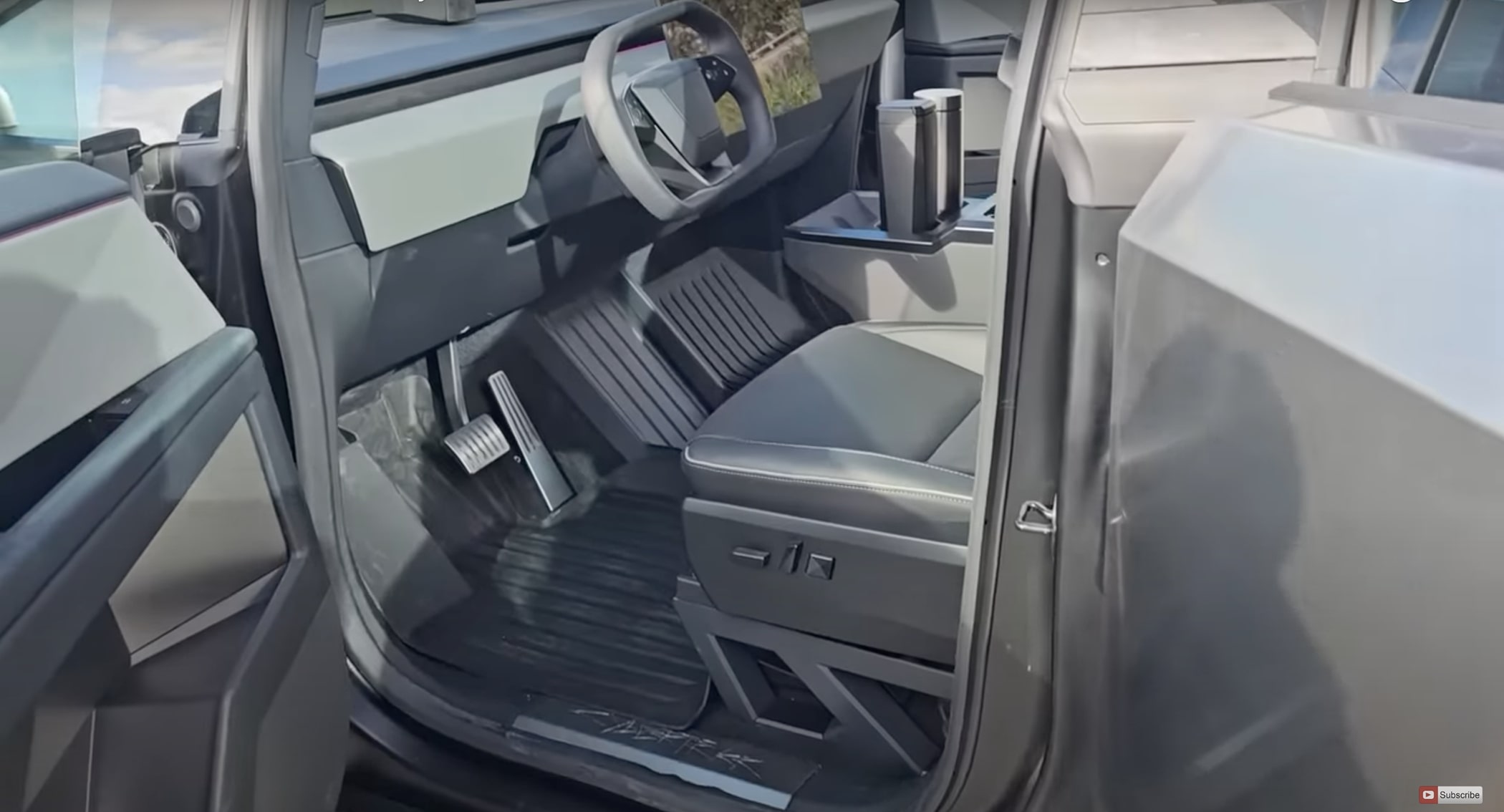

News
Ducati introduces stunning electric race bike for MotoE racing
In a recent YouTube video, Ducati outlined its progress on a new electric race bike which will be supplied to the MotoE racing series.
While the motorcycle industry has been slow to introduce electric options, with only Zero Motorcycles and the Harley-Davidson Livewire being usable options on the market, Ducati is now joining in with the introduction of its new MotoE bike. It will be the sole bike supplied to the new racing series.
The electric prototype, largely based on the MotoGP Ducati Desmosedici race bike, is now being track-tested. Many specifications of the bike were revealed in the video. First off, the bike uses an 18kWh battery using 800-volt architecture, and it is capable of charging at a rate of 20kW.
The powertrain with a custom motor design is capable of delivering 147 horsepower and 103 foot-pounds of torque, allowing the bike to hit a top speed of 170 miles per hour. The bike keeps weight just below 500 pounds (496) via the use of a carbon fiber frame/battery casing, carbon fiber fairing, and a carbon-fiber/aluminum hybrid swing arm.
Ducati didn’t address the range of the bike or how long it could feasibly stay on the track. More details may be released later as Ducati engineers state that the bike is only about 75% complete as of now.
These specs place the bike in an interesting place relative to the competition. Compared to gas-powered bikes, Ducati’s MotoE bike is still far heavier despite its use of novel weight-saving measures. Even the top of the line consumer Ducati Panigale Superleggera V4 weighs roughly 160 pounds less (according to the gas bike’s “dry weight”).
Yet amongst other electric motorcycles, Ducati’s MotoE race bike is a game-changer. Compared to the Harley-Davidson Livewire, Ducati’s bike makes 47 more horsepower and generates 19 more foot-pounds of torque while weighing roughly 50 pounds less.
Compared to the sportbike-designed Zero Motorcycles SR/S, the MotoE bike makes 37 more horsepower but 30 foot-pounds less of torque. It also weighs roughly 10 pounds less. The torque discrepancy likely has to do with gearing as the Zero is limited to only 124 miles per hour.
Electric motorcycles are clearly becoming more advanced as motor and battery technology improves. It is clear that these smaller form factors are most affected by the weight that they must carry and the range they are attempting to replicate from their gas-powered counterparts. With solid-state batteries coming in the (hopefully near) future, these form factors will have the most to gain.
What do you think of the article? Do you have any comments, questions, or concerns? Shoot me an email at william@teslarati.com. You can also reach me on twitter @WilliamWritin. If you have news tips, email us at tips@teslarati.com!

News
Tesla breaks Norway’s all-time annual sales record with one month to spare
With November alone delivering 4,260 new registrations, Tesla has cemented its most dominant year ever in one of Europe’s most mature EV markets.

Tesla shattered Norway’s decade-old annual sales record this month, overtaking Volkswagen’s long-standing milestone with over one month still left in the year. Backed by surging demand ahead of Norway’s upcoming VAT changes, Tesla has already registered 26,666 vehicles year-to-date, surpassing Volkswagen’s 2016 record of 26,572 units.
With November alone delivering 4,260 new registrations month-to-date, Tesla has cemented its most dominant year ever in one of Europe’s most mature EV markets.
Model Y drives historic surge in Norway
Tesla’s impressive momentum has been led overwhelmingly by the Model Y, which accounted for 21,517 of Norway’s registrations this year, as noted in a CarUp report, citing data from Elbil Statistik. The Model 3 followed with 5,087 units, while the Model S and Model X contributed 30 and 19 vehicles, respectively. Even the parallel-imported Cybertruck made the charts with 13 registrations.
Demand intensified sharply through autumn as Norwegian buyers rushed to secure deliveries before the country’s VAT changes take effect in January. The new regulation is expected to add roughly NOK 50,000 to the price of a Model Y, prompting a wave of early purchases that helped lift Tesla beyond the previous all-time record well before year-end.
With December still ahead, Tesla is positioned to extend its historic lead further. Needless to say, it appears that Norway will prove to be one of Tesla’s strongest markets in Europe.
FSD could be a notable demand driver in 2026
What’s especially interesting about Tesla’s feat in Norway is that the company’s biggest selling point today, Full Self-Driving (Supervised), is not yet available there. Tesla, however, recently noted in a post on X that the Dutch regulator RDW has reportedly committed to issuing a Netherlands national approval for FSD (Supervised) in February 2026.
The RDW posted a response to Tesla’s post, clarifying the February 2026 target but stating that FSD’s approval is not assured yet. “The RDW has drawn up a schedule with Tesla in which Tesla is expected to be able to demonstrate that FSD Supervised meets the requirements in February 2026. RDW and Tesla know what efforts need to be made to make a decision on this in February. Whether the schedule will be met remains to be seen in the coming period,” the RDW wrote in a post on its official wesbite.
If FSD (Supervised) does get approved next year, Tesla’s vehicles could gain a notable advantage over competitors, as they would be the only vehicles on the market capable of driving themselves on both inner-city streets and highways with practically no driver input.
News
Tesla Full Self-Driving v14.2’s best new feature is not what you think

Tesla Full Self-Driving v14.2 rolled out late last week to Early Access Program (EAP) members, but its best feature is not what you think.
While Tesla has done a great job of refining the performance of the Full Self-Driving suite with the latest update, there are some other interesting additions, including one that many owners have requested for some time.
Upon the release of v14.2, many owners recognized the Blue Dot next to the Autopilot tab in Vehicle Settings, notifying them of a new feature. What was included as a new feature in the new update was a Full Self-Driving stats feature, which now will show you how many miles you’ve traveled in total, and how many of those miles were driven using FSD:
🚨 The coolest non-driving change of Tesla Full Self-Driving v14.2 pic.twitter.com/HOJcFaV2Ny
— TESLARATI (@Teslarati) November 21, 2025
The feature seems to be more of a bragging rights thing than anything, but it will also give drivers a good idea of how many miles they are using Full Self-Driving for. Those who use telematics-based insurance services will also be able to run experiments of their own, and could determine whether their premiums are impacted by the use of Full Self-Driving, and whether it is more advantageous to use over manual driving.
Tesla rolled out numerous other improvements with Tesla Full Self-Driving v14.2, most notably, the company seems to have resolved previous complaints about brake stabbing and hesitation. This was a major complaint in v14.1, but Tesla has seemed to resolve it with this newest branch of the FSD suite.
There were also improvements in overall operation, and it was notably smoother than past versions. Speed Profiles are seemingly refined as well, as they seem much more fixed on how fast they will travel and how aggressive they will be with things like passing cars on freeways and lane changes.
In future updates, Tesla plans to add Parking Spot selection, along with overall operational improvements. However, CEO Elon Musk recently said that the next branch, Full Self-Driving v14.3, will be where the “final piece of the puzzle is placed.” Tesla believes it is close to solving autonomy, so v14.3 could be a major jump forward, but it remains to be seen.
News
Tesla adjusts crucial feature as winter weather arrives

Tesla has adjusted the functionality of a crucial climate feature as Winter weather has started to arrive throughout some parts of the United States. The new feature was highly requested by owners.
Tesla has a Cabin Overheat Protection feature that helps keep the temperature regulated if it reaches a certain threshold. Inversely, it can be used in cold weather as well, which will automatically warm the cabin if it sinks to a temperature that is too low for the owner’s comfort.
This is a great way to keep the cabin either warmed up just enough or cooled down just enough so that it never gets too hot or too cold. Extreme temperatures could damage certain parts of the vehicle or damage personal belongings that are kept inside the car.
Overheat protection is a great thing to have in hot climates like Arizona or Texas, especially with the Premium trims of the Model 3 and Model Y, which feature a glass roof.
Many owners appreciate the feature, but they argue that using it at home will utilize too much energy, especially during extreme temperatures. For a while, many Tesla fans have requested an option to disable this feature when the car is parked at home, which the company recently added, according to Not a Tesla App.
The feature is part of Software Version 2025.44.3, and the release notes state:
“You can now choose Exclude Home when Cabin Overheat Protection or No A/C is enabled.”
Tesla has been great at listening to what owners want with new features, and this is one that will reserve some charge and prevent unnecessary utilization of available power, especially as the car is parked at home. If owners want to condition the cabin or get the car ready for operation with a comfortable interior, they can utilize the Tesla app to adjust the climate.








